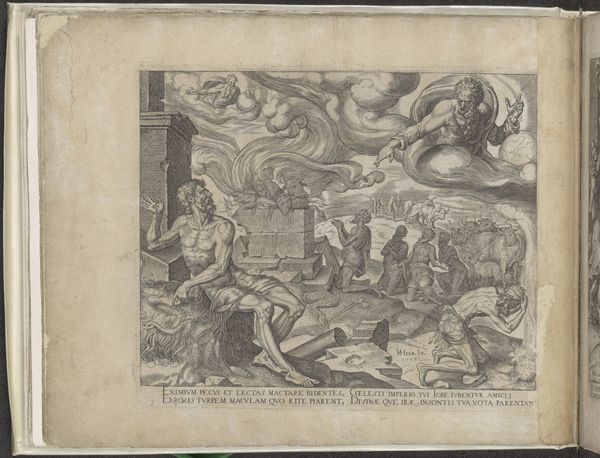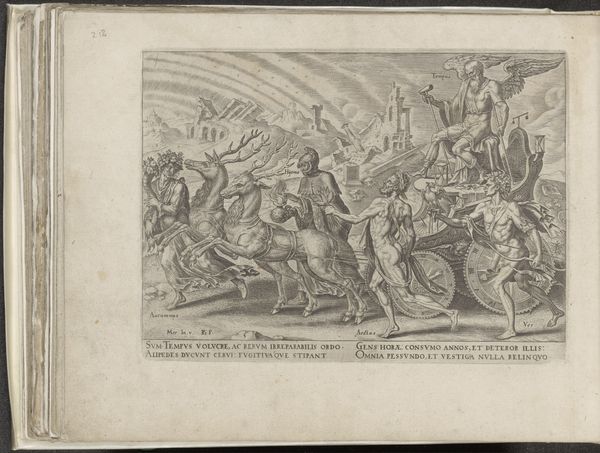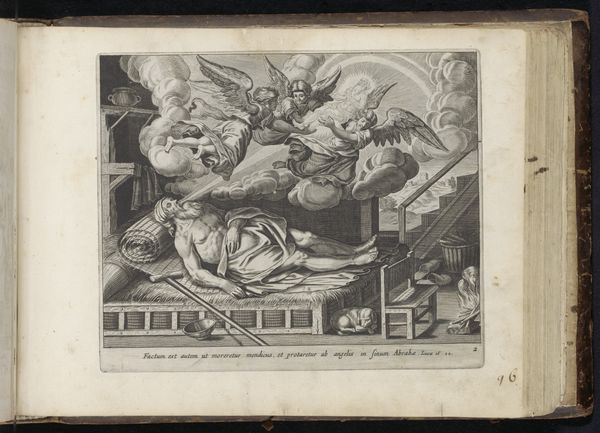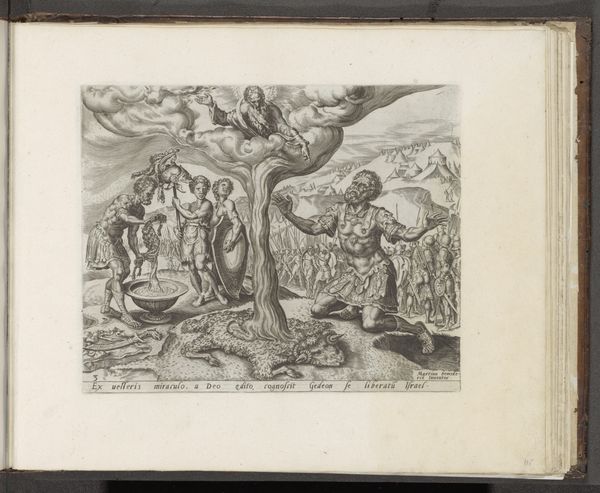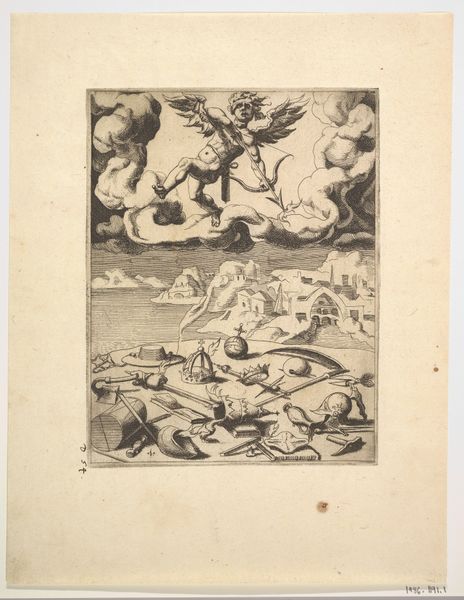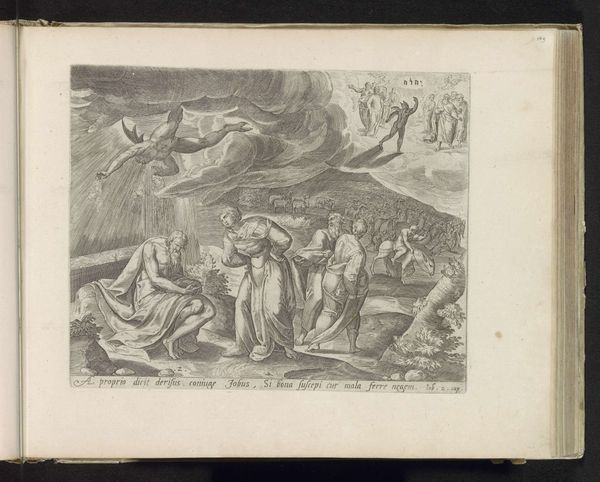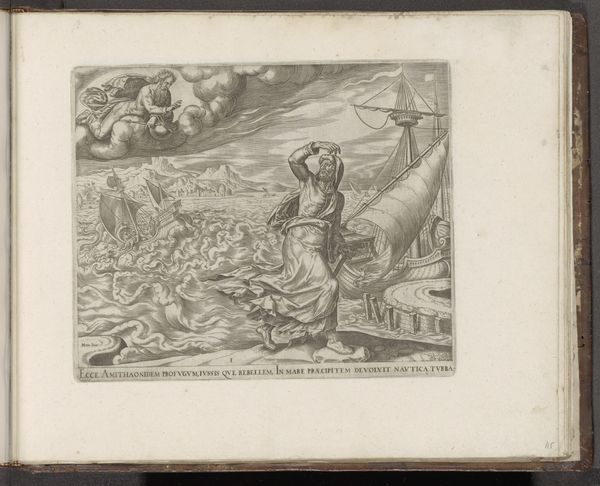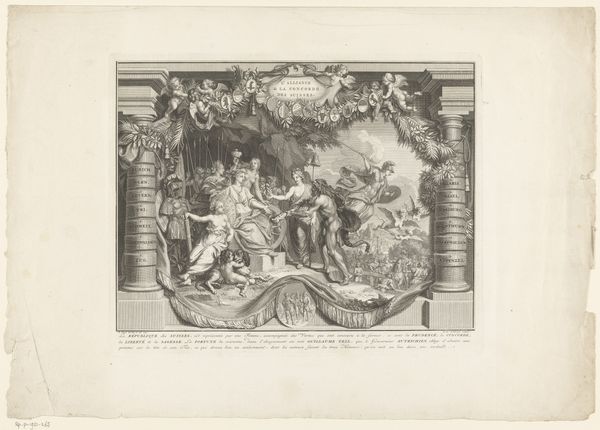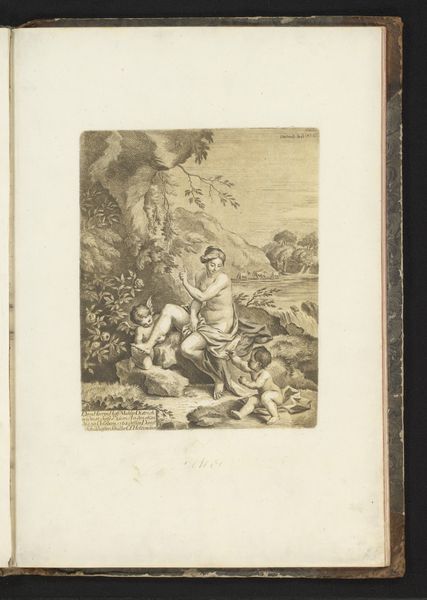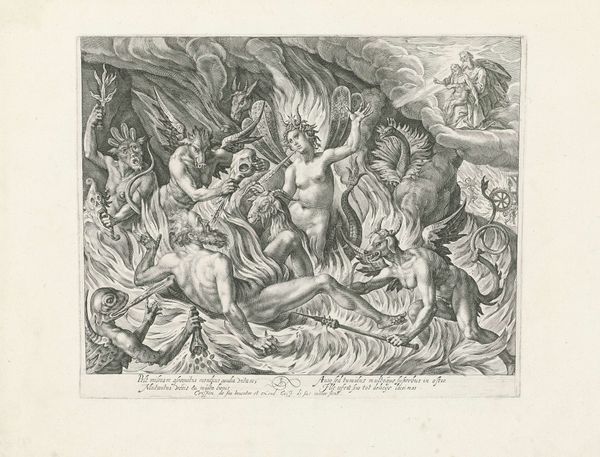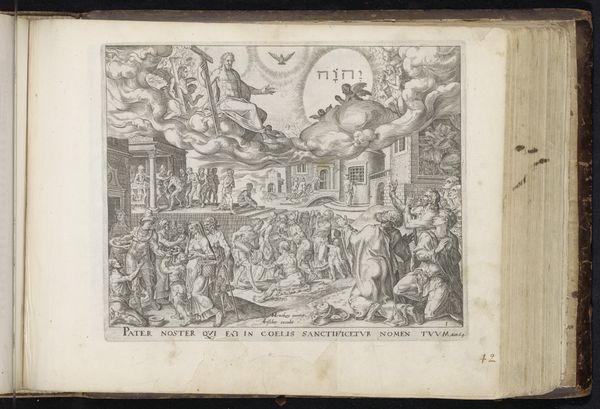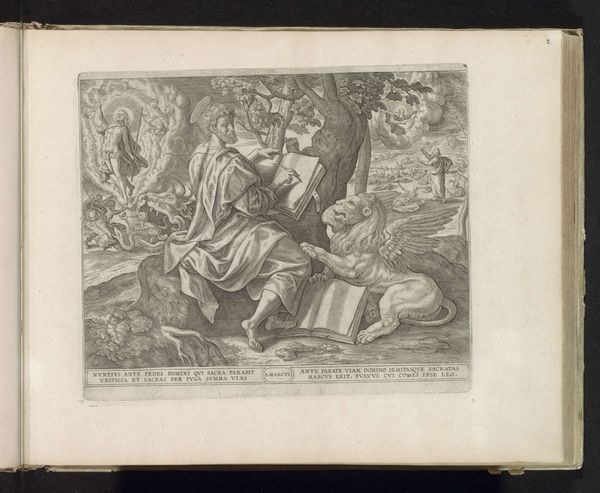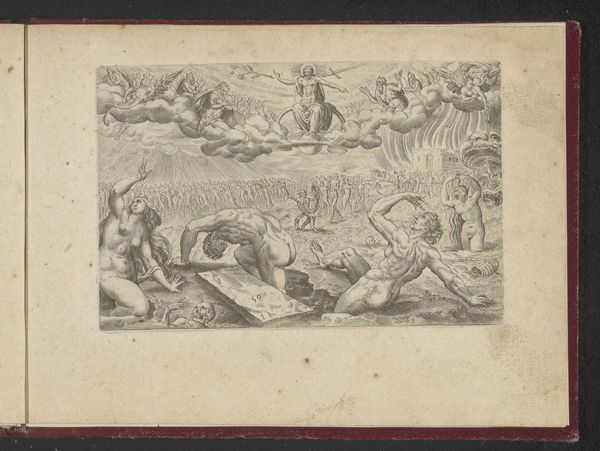
print, intaglio, paper, ink, engraving
#
baroque
# print
#
intaglio
#
figuration
#
paper
#
ink
#
coloured pencil
#
watercolour illustration
#
history-painting
#
engraving
Dimensions: height 213 mm, width 256 mm
Copyright: Rijks Museum: Open Domain
Curator: Here we have a striking engraving from 1646, titled "Vision of the Rich Man in Hell." It’s held in the Rijksmuseum and made using intaglio on paper by an anonymous artist. It's truly unsettling, isn't it? Editor: Unsettling indeed! It looks like a scene pulled directly from a nightmare. All those grotesque figures writhing in what seems to be an awful amount of chaotic ink, all squeezed within the boundaries of the plate. One wonders about the conditions that inspired it... Curator: Given the socio-economic context, I'd say it's safe to assume the intention was quite explicitly moralistic, right? Depicting the rich man tormented by devils while Abraham watches from above... there's that ever-present fear of divine retribution if you stray from the straight and narrow. Editor: Absolutely. But let's also think about the labor involved. Creating such detailed line work, cutting into the metal... it speaks to the intensive, physical nature of printmaking back then. The artist, though nameless to us now, put an immense amount of work into delivering this message. Was he just an artisan reproducing common motifs? Or did he infuse his craft with his own quiet act of resistance against a rigid system of power? Curator: It’s funny how Hell has become so popular across the centuries – even inspiring fashion – a perfect stage to display, without too much subtlety, all of our societal fears. You notice the baroque drama here too, with exaggerated bodies, those agonized expressions, and the clever use of light and dark. Even up in heaven, everything looks somehow gloomy! It pulls you right into the horror. Editor: Exactly. Think about the ink itself: its cost, its sourcing, its connection to global trade. Printmaking in this period relied on an intricate network of resources and skills. What does it tell us about who had access to these images and the means of disseminating such morality tales across communities? Curator: Fascinating thought. It truly encourages one to pause and reconsider how the tools shape the narrative. For me, what really holds my gaze, every single time, is the rich, almost theatrical, composition. There's something profoundly visceral about how it presents despair. Editor: Agreed. Considering the materiality and means of distribution opens up another layer of dialogue concerning who had a voice, who had access, and the ripple effects this single sheet had across society. Curator: Absolutely. A glimpse into history—stained in sepia tones. Editor: Indeed, a dialogue on divine judgment made tangible by earthly means.
Comments
No comments
Be the first to comment and join the conversation on the ultimate creative platform.
